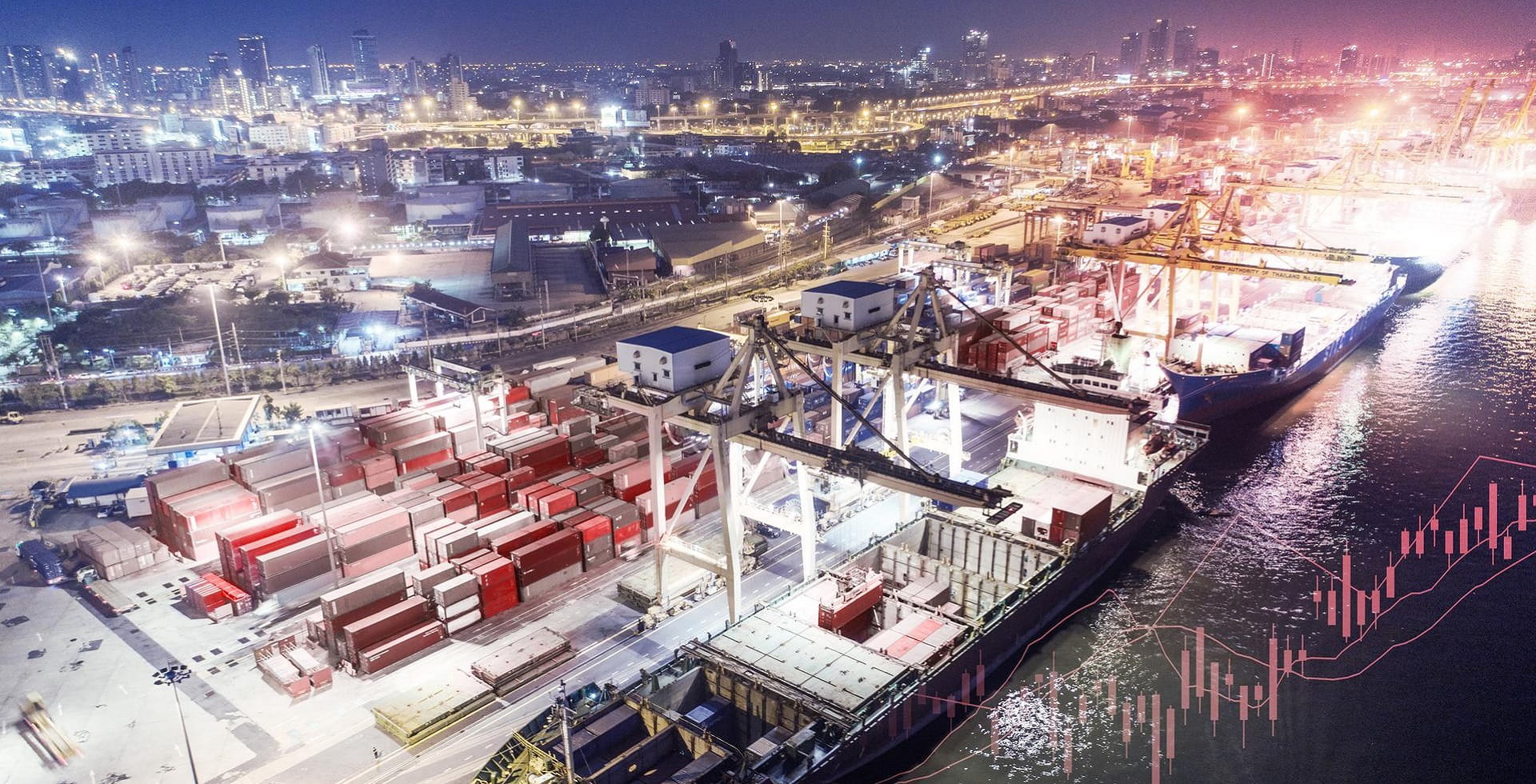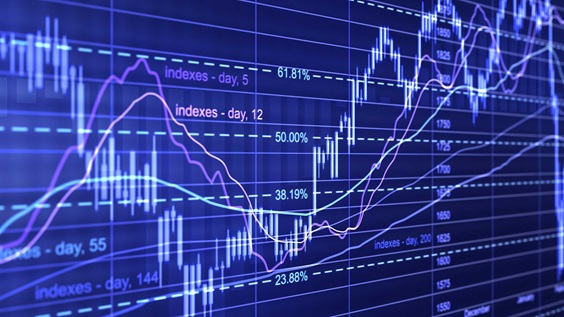In today’s volatile market, diversification may not be enough

Summary
The first part of 2022 has been a rocky period for investors, as the Russia’s invasion of Ukraine came on top of an already volatile start to the year. The attack has unsettled already volatile markets, made inflation worse and accelerated a deglobalisation trend that has been apparent for some time. Investors may need a new toolkit, rather than relying on traditional approaches that previously helped in turbulent times.
Key takeaways
|
Volatility has dominated markets this year, fuelled by Russian armed forces’ invasion of Ukraine and hawkish central bank warnings about inflation risks. The resulting economic sanctions on Russia are also having global repercussions that are making the inflation problem worse. Countries are rethinking their energy and food supply chains, and they are reassessing the currencies used for essential transactions. Sanctions have also sped up the deglobalisation trend as production sites are relocated, organisations grow more vertical, and the allocation of labour and capital becomes less efficient.
As the global economy struggles to cope with these massive changes, investors should use the opportunity to reassess how they structure their portfolios. What has worked in the past for many – comprehensive diversification across and within asset classes – may not be sufficient. Rather, it may be time to actively adjust existing positions and add new approaches. These may include combining commodities with other real assets to help improve resiliency, or harvesting risk premia to add incremental returns.
As globalisation wanes, geofinance is becoming critical in how the world works
It’s no surprise that financial markets are becoming instrumental in geopolitical struggles and vice versa – a concept frequently referred to as “geofinance”. Consider how economic sanctions against Russia are having knock-on effects around the world:
- Russia’s central bank is limiting the use of its US dollar and euro reserves. This leads to the fundamental question of whether those currencies still make sense as reserve in a central bank’s balance sheet – at least in countries potentially exposed to sanctions. There are few alternatives at present, but we would expect an increased diversification of currency baskets over time and larger reserves of gold – an asset class we favour in the long term.
- Since it is now almost impossible to trade with Russia in US dollars, the greenback could again be challenged as the preferred global trading currency. We do not expect the US dollar to be replaced by any other currency in the coming years, but over time, more transactions will take place in what will also become trading currencies. As the US has, over decades, financed its deficit with international demand for dollars, this could lead – permanently – to higher inflation in the dollar through its devaluation and, consequently, less demand for US Treasuries by central banks. And the timing couldn’t be worse for the US Treasury, with the US debt-to-GDP ratio ballooning at around 133% at the end of 2021, up 25 percentage points since the onset of the Covid-19 crisis.1
- Prohibitions against doing business with Russian companies – which will lead to their eventual exclusion by major equity and fixed-income indices – could over time lead to a repricing of tail risks for countries not aligned with the West. This could become particularly problematic if we see another “cold war” between blocs of countries; in that case, large clusters of risks will likely emerge. Perhaps we will soon have to redefine global bonds and equities based on this new reality.
Get ready: inflation may be here to stay
With the globalisation trend faltering, “re-regionalisation” gaining traction and growing barriers to entry between trading blocs, capital and labour will be misallocated – particularly as production is repatriated to less efficient locations, inventories are expanded and labour costs increase. These inflationary trends would be serious enough on their own, but there are also other major inflationary shifts underway. Consider what is happening in the energy and agricultural supply chains.
The climate transition is contributing to an inflationary commodities super-cycle
When we look at the global economy, we see signs of a “super-cycle” in commodities – a massive shift in production and usage that is supported by global efforts to reduce carbon emissions. Consider that fossil-fuel investment (especially in shale gas and coal) has plunged over the last few years, while the transition to “green” energy has just begun in earnest. Green technology is dependent on a different set of commodities – just think about the copper used in electric vehicles. In addition, we must recognise that while renewable energy is less polluting, it is less “energy-dense” than its fossil-fuel or nuclear counterparts on a same-for-same basis. That means more energy sources will be needed to produce the same amount of energy.
Before the invasion of Ukraine, we were convinced that the energy transition alone would lead to some inflationary pressures. Since then, the Ukraine crisis has been a catalyst for major changes that could push inflation up even more. Consider these examples:
- Germany is rethinking its long-term dependence on Russian gas.
- The EU is discussing a EUR 200 billion package of “NextGenerationEU” green bonds, favouring (among other areas) renewables and green energy.
- France and other countries are subsidising petrol prices, which indirectly supports demand etc.
- Above all, a full boycott of Russian gas imports – which we believe is increasingly likely – would worsen the inflationary gas price shock.
Shifts in the agricultural system are inflationary
In parallel, the drop in production of agricultural goods – especially Ukrainian wheat – has already led to rising food prices, and more increases are in store. This will be untenable for already exposed countries like Egypt, Nigeria or even Turkey, and we could even see a growing risk of civil unrest in certain parts of the world. Of course, those production cuts will be at least partly compensated for by production rises or substitutions elsewhere. But in the EU and other regions close to Russia, the fertilisers that help increase productivity are mainly produced thanks to Russian gas. A less-productive agricultural system therefore likely means higher food prices in the medium term – and related commodity prices have already risen significantly (see Exhibit 1).
Exhibit 1: in recent months, the price of gas, wheat and potash (used in fertiliser) has jumped
Price of Chicago wheat, European natural gas and Brazil potash (2015-2022)

Source: Bloomberg. Data as at 12 April 2022.
So the world is facing the real risk that there will be a further rise not only in inflation, but in inflation expectations. Similar environments in the past have led to a vicious inflationary cycle – something central banks want to avoid at all costs. It is therefore not surprising that the US Federal Reserve threatens to use the “big bazooka” – 50-basis-point hikes – to cool down the US economy. Meanwhile, the European Central Bank has clearly stated, despite the risk of an economic slowdown, that it would use a more hawkish approach, emphasising the focus on maintaining its credibility in the fight against inflation.
What should investors do?
We think interest rates could rise even further than expected in the next month, especially in Europe. Meanwhile, we expect the US bond market to bounce back over the next 12 months, after many years of overvaluation (see Exhibit 2).
Exhibit 2: powered by rising inflation, the recent jump in short-term Treasuries was among the highest in decades
Six-month change in 2-year US Treasury rates (1985-2022)

Source:Bloomberg. Data as at March 2022.
Many ingredients are on hand for lower markets and yet retail investors don’t yet seem to have the same view:
- Valuations remain high.
- Rising wages and energy costs are eating slowly but surely into companies’ margins.
- There is tremendous uncertainty about production chains.
- The consumption pattern is a drag on growth.
- Central banks’ hawkishness is set to reduce “free cash”.
Could it be that investors are still pursuing a “buy-the-dip” strategy, which indeed worked well in past years? Or are we seeing primarily a reallocation from bonds to equities, as the latter offers a better inflation hedge, being a real asset?
From our perspective, volatility looks set to remain high, so before we move back to a positive stance, real rates will need to come down and valuations will need to adjust. Critically, we see early signs of earnings pressure. At Allianz Global Investors, our investment team uses artificial intelligence-powered software to analyse the wording in broker reports on companies around the world, and they have seen a notable downward trend in sentiment (see Exhibit 3).
Exhibit 3: broker research reports have grown increasingly negative about companies globally
AllianzGI's proprietary broker sentiment score by region (Jan-Apr 2022)

Source: Allianz Global Investors. Data at of April 2022.
In terms of regions, we are especially worried about the euro zone. In its benchmark index (the Euro Stoxx 50), there are no large technology companies that have the same pricing power as their US counterparts do. Moreover, Europe has fewer “oligopolistic” companies and a high dependency on energy. The UK offers much better protection thanks to its exposure to a barbell of defensive healthcare and energy.
Emerging markets, on the other hand, are more complex: commodity importers will continue to suffer, especially if the US dollar remains solid, while exporters will obviously profit. China has elections approaching, so we expect to see more fiscal and monetary support for its economy, in addition to more conciliatory tones towards trade with the US and a more moderate approach to regulation. However, China’s “zero-Covid” strategy could be severely tested by the new Omicron variant.
If equities as an asset class can be classified as “cautiously negative” and bonds may still not yet be an opportunity, what do we have left? Commodities, via direct or indirect investment, represent a great diversifier. The commodities super-cycle, the lack of supply and their overall ability to be an inflation hedge favour commodities as an asset class. The only real downside we see for now is that liquidity risks could provoke more volatility when key players – asset managers and intermediaries - exit the market. Combining commodities with other real assets (such as real estate, inflation-linked bonds, etc) may be able to help make portfolios more resilient while still allowing for exposure to equity markets.
Three specific opportunities
- At current spreads, US high yield start looking attractive especially if one does not expect a major recession in 2023.
- The concept of “Digital Darwinism” – amid a new “survival of the fittest” digital era – seems set to accelerate, putting certain tech and big data companies in high demand.
- The road to “net-zero” carbon emissions will continue to attract flows into sustainable investments in both liquid and private markets. This is especially true as European regulators enact MiFID II – a massive set of new financial regulations that seem likely to be copied by global regulators in one version or another.
As the West reassesses its relationship with Russia, inflationary pressures mount and central banks try to engineer a soft landing, investors will want to stay open to new ideas. Traditional diversification can be helpful during normal times, but the global economy has entered uncharted new territory. Investors will want to be flexible, nimble and active in the coming months.
1 Source: IMF. Data as at December 2021.
2186981
The Ukraine crisis and the related sanctions against the Russian Federation, the separatist regions of DNR and LNR, and Belarus are constantly evolving. The statements included herein are as of the date provided and are subject to change.
Supply chain snapshot: uncovering opportunities despite disruption

Summary
Quick answers to some of the most common supply chain questions.




